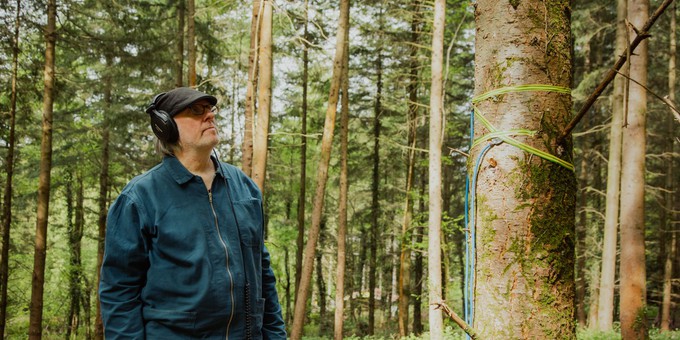
This month we invite audiences to step into the Forest of Dean and explore the inner world of the trees in a new audio-visual experience, The Secret Sounds of Trees.
Last month we caught up with sound artist Jez riley French to learn about his creative process, find out about some of the sounds he has recorded for this installation and how he is working with composer Lau Nau on this soundscape.
This is part 2 of the interview. You can read the first part of the interview here.
How has listening to the forest affected you? Can you describe your experience of listening to the forest?
Listening, if you give it time, can be transformative to ones sense of place, and across the scale; from being immersed in a single sound source, to perceiving more and more of all the sounds around us at any given time, and of course, to aspects that signify less positive change.
At Beechenhurst, and in other forests over the past four or five years, I’ve noticed a quite radical drop in insect activity for example. Of course there is also the now constant sound of flight paths and traffic nearby.
I know such sounds frustrate some listeners, but it is what is there and if, like me, you reject the divide that the word ‘nature’ implies, separating the human species from all others, then those sounds are ‘nature’ sounds also, it’s just that they are made by one species without consideration of any other.
I find thinking about such sounds in that way gives one a sharper sense of our impact. That said, listening to species sounds below the surface, without those human sounds is a remarkable experience, and that is what The Secret Sounds of Trees will allow the audience to do.
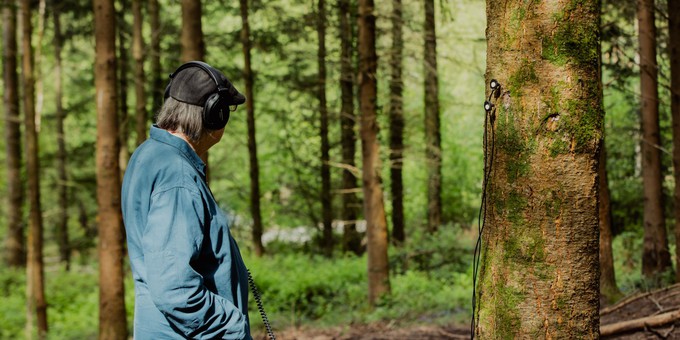
How would you like audiences to approach this experience? And what do you hope audiences will take away from this experience?
To get the most from this, or any listening experience, the key really is to give time and space to the listening. That sounds obvious, simple, but as a species we’re generally not that good at listening.
We tend to try to occupy the space we are in, physically and sonically, even if we think we’re being quiet. So find a comfortable position in the area of the forest the event will be taking place in and realise that being there means you are part of the piece also.
The willingness to let all the other sounds have priority for a while will, hopefully, give each person a more meaningful experience, shared with everyone else there and of course, the forest itself. It’s important to remember also that we are encroaching on all the other species, and accepting that can help with the listening, with finding space to listen.
Any tips for audiences on how to listen deeply during the installation?
It does tend to be different for each person, but I think with events such as this, where we’re not on our own, the key is to be aware of your individual role in the collective quietness that will enhance the experience. Allow time for the sounds to take us beyond our usual, short attention spans.
Deep, or active listening, at its core is really about allowing the place or situation to guide the process. You have to give up control in a way. At least give up the idea that you know what a forest sounds like in this instance.
For this specific location we are providing straw bales to help the experience. Not many of use can stay totally still whilst standing for more than a few minutes.
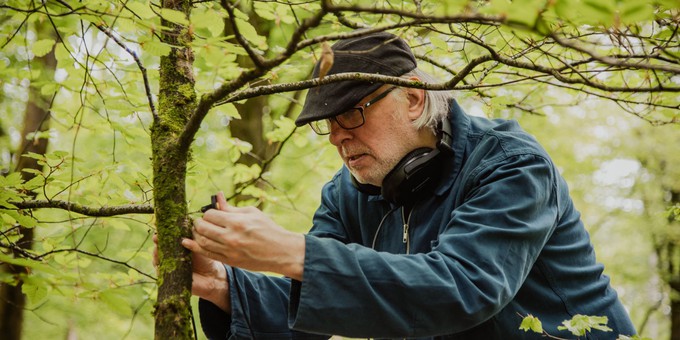
How does being at Beechenhurst make you feel?
I tend to think, as I’ve already alluded to, that how we feel about a specific place takes time, and it should take time. I hadn’t visited this part of the forest before this project so I’m still processing my impressions, but, given that I was there specifically to listen, it did take me a couple of days to find my feet so to speak.
I think that’s one of the positive things about accessible spaces like Beechenhurst; you can go for a few hours or a day, but you can also keep returning and the closer you look, and listen, the more there is. Personally, if I keep returning to a place I have to allow it to influence my reason for doing so. Not to return with expectations, but with an understanding that I, we, have to do something more than use environments for our pleasure.
I spent some time around the borders of Beechenhurt also, thinking about the tension there is for any artist working in such places. We bring ourselves, our equipment and, hopefully, more people to them at times, but with work such as The Secret Sounds of Trees there is an important element of allowing audiences in to the sensory world of other species that isn’t normally accessible, so there is the artistic value but also a wider purpose that links to environmental knowledge and respect.
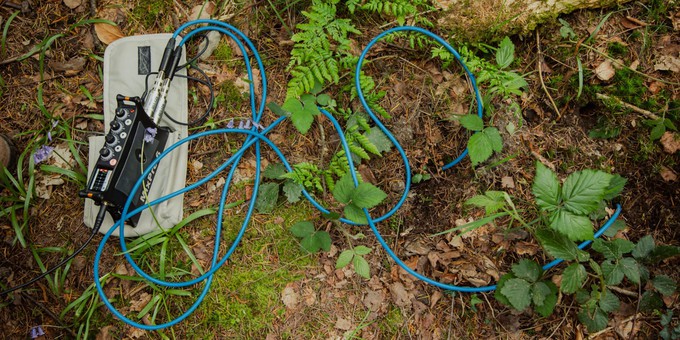
The Secret Sounds of Trees is a new audio-visual installation taking place at Beechenhurst in the Forest of Dean from Friday 22 - Sunday 24 September. To find out more and to book tickets, visit the event page here.
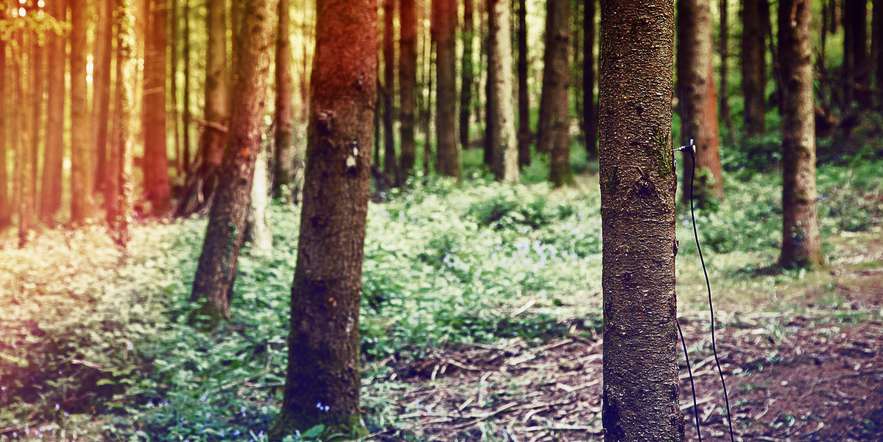
Would you like to get more involved in supporting our event, The Secret Sounds of Trees? We are looking for volunteers to help with stewarding.
Roles will include stewarding the car park, checking tickets, stewarding the installation space and collecting audience surveys.
You will need to be available from 6.30pm-10pm on one or more of the evenings.
A travel allowance will be provided and as part of your stewarding role you will get to experience the installation.
Steward roles are available on a first come, first served basis.
Please complete the form here as soon as possible if you are interested and Chloe will be in touch.
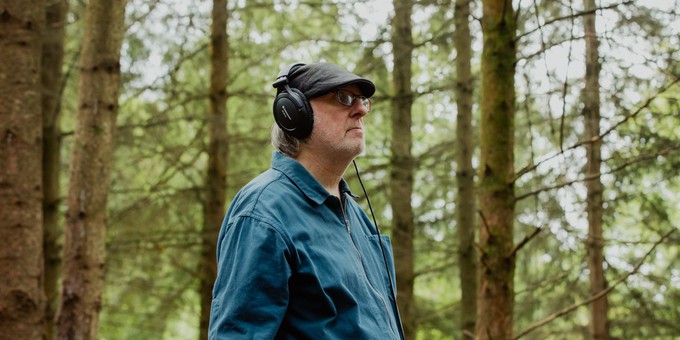
In September 2023 we invite audiences to step into the Forest of Dean and explore the inner world of the trees in a new audio-visual experience, The Secret Sounds of Trees.
This month we caught up with sound artist Jez riley French to learn about his creative process, find out about some of the sounds he has recorded for this installation and how he is working with composer Lau Nau on this soundscape.
Can you tell us about your creative process for this new soundscape and your time capturing sounds at Beechenhurst?
My practice involves working with what I tend to refer to as sound outside of our attention and a key part of this is developing specialist microphones and techniques for listening in different ways, for example to the internal sounds of plants.
My interest is in the listening itself, and how accessing these sounds allows us to re-think the narratives around our perception of place.
When I’m able to spend some time in a specific location, such as at Beechenhurst, I’m not interested in ‘sound collecting’ as a flat, technical process. Instead I spend the time engrossed in the listening itself, including through the microphones I build, and every now and then, if it feels right, I’ll press record.
I think you have to be happy to let sounds go, to not always try to document them as it can, if that is the only motivation, interrupt the listening. It’s perhaps subtle, but for me that is how I keep a creative connection to the act of listening. It’s an intuitive process, guided of course by research and creative impulses, but the personal, moment to moment experience is what has allowed me to question standard ways of both listening and recording, and in so doing, extend the practice.
_large.jpg)
For Feathered Pink Botanic, the sound piece that is part of The Secret Sound of Trees, I focused on the internal sounds of trees, moss, ferns and in soil horizons beneath the forest floor.
The material itself then takes time to reflect on, re-listen to and start to gain a sense of how a piece might form from it.
When I do record something it tends to be a durational process, often spending several hours listening to a single sound or a wider location as it evolves. So listening back can also take a long time. It’s a gradual process; some days you have to step back, wait, and come back to a recording with fresh ears, find new ways for it to work in a piece.
As the installation for Beechenhurst is multi-channel, involving spatialisation, it’s only completed when we’re back there, working with speaker placement and the environment itself of course.
How have you collaborated with Lau Nau to create this soundscape?
I’ve known Laura (Lau Nau) for many years now and one thing that I find interesting about her work is that it uses melodic material in ways that pull you in to the music with apparent ease but without compromising its strength.
As with any collaboration there’s an important element of trust involved of course, and I think that’s been there since the first time we worked together. This means we can each connect to the material being shared with more of the ‘space’ that is needed.
Laura is based in Finland so we’ve been sending each other recordings and talking through ways to maintain the central point of the piece, which is to reveal the forest in a way that invites as wide an audience as possible to listen differently, connecting in new ways to the other species around them.

Can you tell us about some of the sounds of nature that we will hear within your new soundscape?
Describing the sounds in the piece is difficult, partly because many of them have not been recorded before.
The wider research is still catching up with these forms of listening and recording, and, to be honest, it’s not always clear what process is making the sounds. The cellular processes as plants draw in nutrients, or the microscopic signals in mycorrhizal / mycelium networks are all part of the work.
I think we’re also at a point now where we need to think carefully about how the language we use when talking about non-human life carries with it a degree of imposition, often unintentional but with some weight. That might seem overly senstive to some, but considering these questions is part of the responsibility we have when, in effect, we are using the sounds of other species as creative material.
What I can say though is that audiences will hear root systems taking in moisture, bark crackling as sap rises, the intricate sound of water storage in the moss blanketing the forest floor, insect activity and other vibrations in soil horizons (different layers of soil).
Is there a sound you captured that has really surprised you?
I’m always surprised, which is why I’m still finding new ways to listen, still fascinated.
Sometimes I might have a basic idea of the possible sounds from specific sources. For example the resonance of a building vibrating in its locale, or the root systems of plants early in the morning, but the point really is that these sounds never repeat and every inch of every environment is different, if you listen at the micro-level, even to vast landscapes.
The myriad combinations of sounds are always new, always evolving, so I’m constantly surprised. Constantly realising how much we can get from listening, and how much we still have to learn about what we hear, and how we translate the experiences.
_large.jpg)
Part two of our interview with Jez riley French will be published on our website in early September. Sign up to our mailing list here to be the first to know.
The Secret Sounds of Trees is a new audio-visual installation taking place at Beechenhurst in the Forest of Dean from Friday 22 - Sunday 24 September. To find out more and to book tickets, visit the event page here.
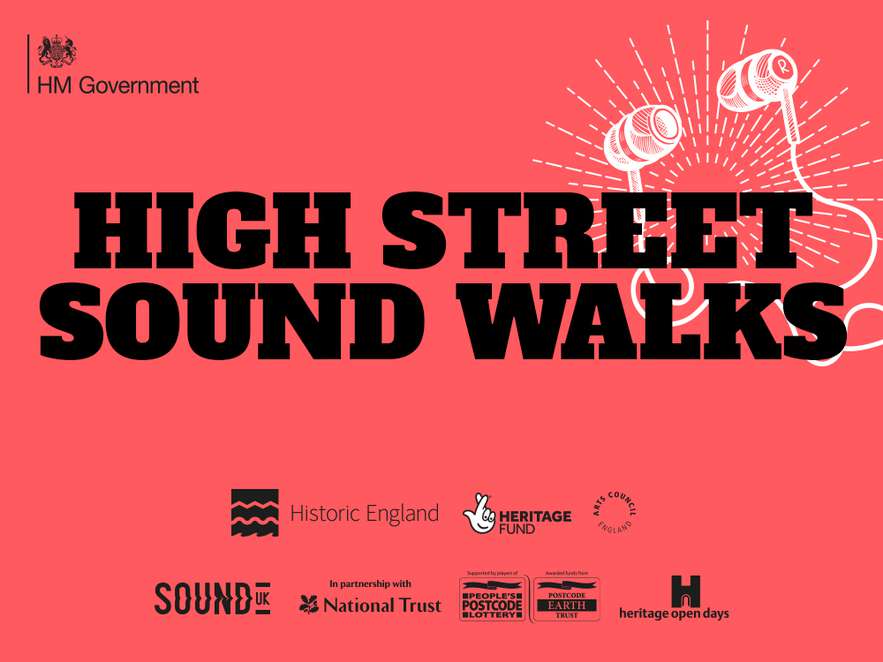
We are delighted to be working with Historic England and the National Trust to launch a series of self-guided, immersive sound walks to help people discover the magic of their local high streets.
We are producing new Sound Walks for six High Street Heritage Action Zones across England during Heritage Open Days, from 10-19 September 2021.
Each sound walk will be a distinctive, immersive soundscape to take listeners on a journey of discovery. They will bring hidden histories and stories to life, helping people to see their high street in a new light. Listeners will take a self-guided route, supported by an illustrated map. The walks will encourage people to slow down, pause and reflect, and to experience their environment in a new way.
Sound artists will work with communities to collect stories so that each sound walk is informed by and represents authentic local voices and experiences. These works will connect listeners with the people, past and present, that have made their high street what it is today, transforming the everyday into something magical.
The six sound walks will be launched as part of Heritage Open Days and will be available online and in accessible formats.
Locations and Artists
Redruth
Annamaria Murphy, Sue Hill and Ciaran Clarke will explore layers of time to unlock the fascinating strata of sound, voice and story within the high street. Produced in association with Carn to Cove.
Reading
Aundre Goddard and Richard Bentley’s engaging sound walk combines music, audio drama and outdoor museum spaces. Produced in association with CultureMix, Readipop and Reading Borough Council.
Great Yarmouth
Great Yarmouth is a place of contrast and diversity, and nowhere is this more apparent than on its high street. Oliver Payne’s sound walk aims to capture the charm of this enigmatic place. Produced in association with originalprojects and Norfolk & Norwich Festival.
Grantham
Sandra Kazlauskaite will incorporate a collage of aural histories, archives and local residents’ memories to tell a story about the histories of the high street. Produced in association with Emilie Nunn and South Kesteven District Council.
Barrow
Dan Fox will embrace the diversity of people in Barrow. Listeners will explore the landmarks of work and play on the high street including iconic shops, businesses and the clubs of Cornwallis Street, alongside civic events like cycle races, and the centenary of the town hall. Produced in association with Full of Noises.
Hull
Jez riley French’s sound walk explores the complex social, caultural and physical history of the street, combined with it's fascinating but often hidden, overlooked or usually inaudible sounds. Produced in association with Absolutely Cultured.
We will share more details on each Sound Walk, the composers and the partners involved over the coming months.
For more details, visit: www.HistoricEngland.org.uk/SoundWalks
High Street Sound Walks is a commission by Historic England, National Trust and Heritage Open Days with support from the players of People’s Postcode Lottery and produced by Sound UK. It is part of the High Streets Heritage Action Zones Cultural Programme, led by Historic England.
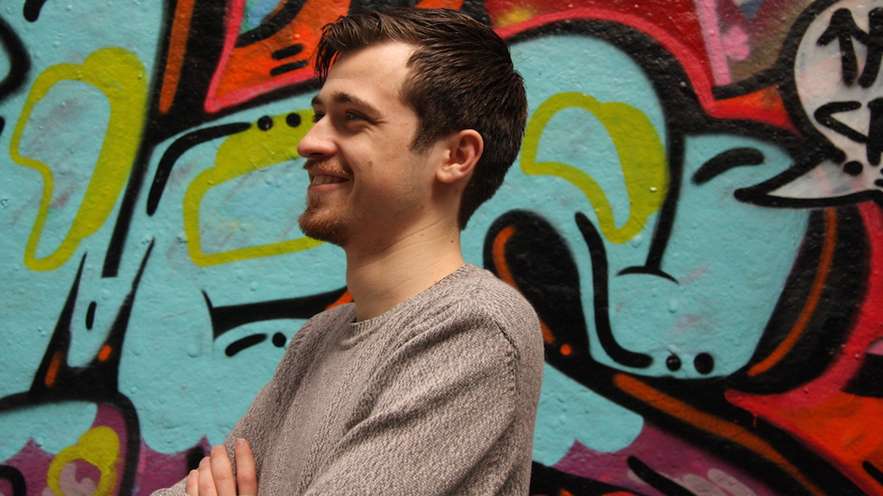
Composer and Live Music Sculpture founder Samuel Bordoli, tells us about his inspiration for The Planets 2018
The idea for The Planets 2018 grew out of my Live Music Sculpture series – four site-specific creations for live musicians placed spatially around unusual architectural landmarks, including Tower Bridge, GLA City Hall and The Monument.
I have always loved visiting planetariums and wanted to combine the thrill of exploring our solar system with site-specific music in these unique spaces. The opportunity of surrounding an audience with sound on all sides while visuals filled their peripheral vision was particularly tantalising.
A string quartet seemed like the most natural ensemble for this project. It would be capable of working within the intimate space and lend itself well to quadraphonic placement. Its ability to achieve unity as well as diversity in tone and texture would also be important in a dry acoustic. I approached the Ligeti Quartet, who are renowned for their pioneering approach to new music. They loved the idea and came on board.
I realised that we were approaching the centenary of Gustav Holst’s The Planets. The threads seemed to come together – this would be a 21st Century Planets Suite, this time shared by eight composers each taking on a different planet. The composers would team up with a scientist to learn about the latest planetary research and incorporate this into their music.
I wanted The Planets 2018 to not only reveal the scientific developments of the last one hundred years, but also the musical changes. Holst was inspired by astrology – the contemporary composers would be influenced by astronomy. In the years that science has progressed, composers have been influenced by changing tastes, technologies and techniques. The project would tour around the UK to different planetariums accompanied by live visuals, taking audiences on a unique tour of the solar system, illuminated by music and science.
The scale of the idea needed an experienced and passionate producer to bring it to life. I was delighted when Sound UK came on board and brought their knowledge and creativity to the project. Together we commissioned Ayanna Witter-Johnson, Deborah Pritchard, Laurence Crane, Mira Calix, Richard Bullen, Shiva Feshareki and Yazz Ahmed to take on a planet – all renowned for pushing boundaries and being as varied in musical voice as the planets are in geological form.
I was inspired to take on the planet Uranus after visiting the Herschel Museum in Bath where it was discovered in 1781. I enjoyed being in the garden where it was first glimpsed through a telescope and standing on the damaged stones of Herschel’s workshop floor where molten metal had been spilled as he manufactured the lenses with his sister and fellow astronomer Caroline. It was fun to note that William Herschel was also a composer!
Guiding me during the process was David A. Rothery, professor of planetary geosciences, whose encyclopaedic knowledge has been invaluable. It turns out Uranus is a fascinating planet because its rotation around the axis is tilted on its side. David described the extraordinary effect this would have on sunrise and sunset – essentially 42 earth years of a pale sun slowly revolving in the sky, the circle getting wider until it disappeared under the horizon leading to another 42 years of twilight then darkness. This is the journey I have tried to communicate in the piece. It was quite a challenge converting 84 years into 5 minutes.
I hope audiences attending The Planets 2018 will be inspired when they experience the diversity of our solar system in the context of a wide range of music here on Earth. The questions raised by music and science remain bigger than all of us. This project is a humble glimpse of eight, highly personal responses to broader scientific discoveries about planets that undoubtedly influence us all. This is in no way the final say on the matter. We hope that another group of composers will do this again in 2118.
SB
29 Sept - 2 Oct
The Planets 2018
London, Winchester, Bristol, (Birmingham SOLD OUT)
BOOK NOW
Image credit: Bill Bankes-Jones
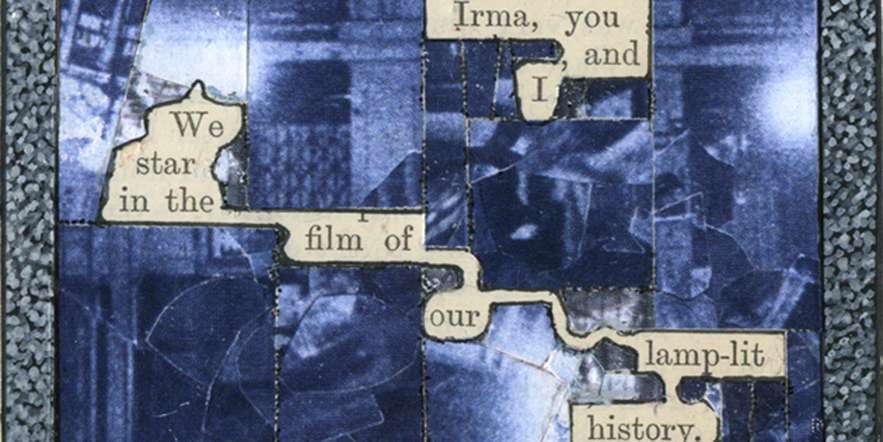
TOM PHILLIPS
Irma: an opera
Ahead of Royal Academy artist Tom Phillips’ 80th birthday next week, Sound UK is delighted to announce the first multimedia performance of Irma: an opera at South London Gallery.
This landmark event in Phillips’ home of Peckham, brings together world-class director and designer Netia Jones, and her company Lightmap, with Anton Lukoszevieze, and his acclaimed ensemble Apartment House. Together they will celebrate one of Britain’s most distinguished artists, recognising Phillips’ work as a composer and wider influence on the world of music.
16, 17 September
South London Gallery
Find out more
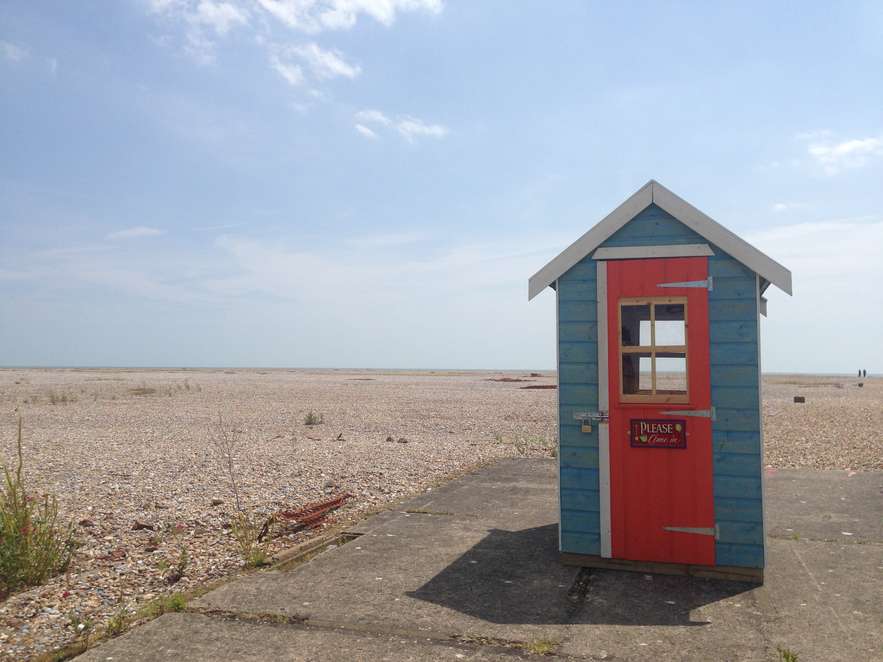
Take a voyage around our coast in the heart of London: immerse yourself in One and All after hours; dive into a programme of pop-up talks and poetry; chill out watching slow film in our Screening Room; and enjoy a sea-inspired cocktail the Moby Dick for just £5.00 at Pennethornes Café Bar.

The Manchester Science Festival is underway now and features a wonderful new commission from Tania Kovats, alongside a whole host of other exciting events.
Head to Manchester to see Tania’s new commission ‘Evaporation’, which takes Gaia Theory as a starting point to explore our seas. Gaia Theory was created by James Lovelock and suggested that the oceans are a barometer of the planet’s health. The installation is part of climate art project ArtCop21.
Kovats’ work is always exploring our relationship with the ocean, from the All The Seas commission seen at the @fruitmarketgallery to her new piece for our online art experience One and All, which investigates tides.
Follow this link to find out more about how you can see her new installation in Manchester and even hear her in conversation as part of the Science Festival.
And follow this link to see her brand new commission Tide, launching online on 4th November 2015.
Tania will also have new work on show at our One and All exhibition at @somersethouse in London, launching on the same day.
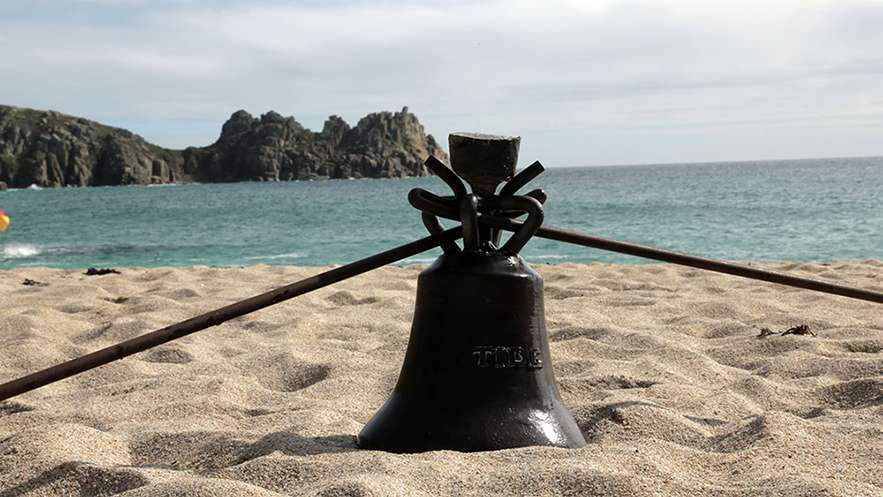
At this year’s autumnal equinox, leading artist Tania Kovats cast her bronze bell as the sun set on Porthcurno Beach. The tidal bell will be rung at high tide on the River Thames as part of the National Trust’s One and All exhibition at Somerset House from 4 November to 13 December. Members of the public are invited to volunteer to ring the bell each day. You can sign up online at from midday on Thursday 22 October.
One and All is a digital voyage through sight, sound and sea by three leading artists – Tania Kovats, Owen Sheers and Martyn Ware. Working across art, language and 3D sound, with award-winning film maker Benjamin Wigley, they capture the powerful connection we all have to our coast.
One and All is available to experience online at www.nationaltrust. org.uk/oneandall, plus Somerset House hosts a dramatic staging of these digital artworks that invites visitors to take this evocative journey around our shores in the heart of the city.
Visit our Live Events for full details.
One and All is a Trust New Art and Sound UK co-commission. Produced in collaboration with artdocs and The Swarm.
Supported using public funding by the National Lottery through Arts Council England and by PRS for Music Foundation.
Somerset House exhibition is sponsored by Panasonic, Official Partner of the National Trust.
Martyn Ware’s speakers kindly provided by Bowers + Wilkins.
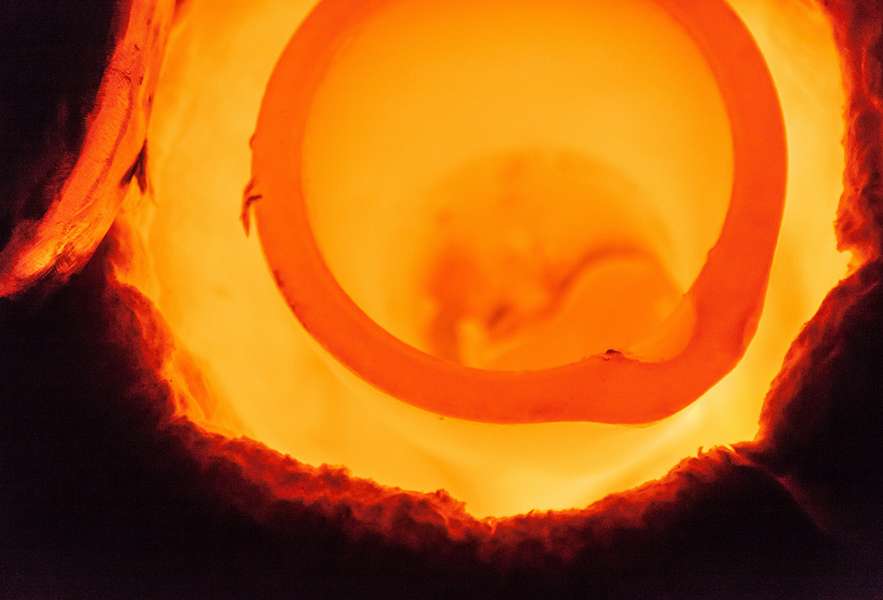
A bronze bell, cast at sunset on Porthcurno Beach, will form the central piece of Tania Kovats' work in the upcoming One and All exhibition at Somerset House. Storyteller Nick Hunt will weave tales of bells, tides and local tales whilst Ore + Ingot turn solid metal to molten fire. Come and see this tin and copper casting, a common practice in Cornwall 150 years ago. Dress warmly and bring a torch.
23 September, 6.30 – 7.30pm.
Free admission.
Porthcurno Beach, Cornwall, TR19 6JX.
One and All – a voyage through sight, sound and sea launches online and at Somerset House, London on 4 November. www.nationaltrust.org.uk/oneandall
One and All is a Trust New Art and sounduk co-commission. Produced in collaboration with artdocs and The Swarm.
Generously supported by Arts Council England, PRS for Music Foundation and Bowers + Wilkins.

We've just finished a trip around the coast with What Does the Sea Say?
Sound artist Martyn Ware created a sound installation for a bright blue beach hut which we took to three post industrial coastal locations. Inside people were invited to record their feelings about the sea, as well as write them on the walls.
We started in the north east in the ex coal mining town of Seaham, on the Durham Heritage Coast. Set high on the cliff tops the hut had a stunning position against the backdrop of the drammatic coast line. Hard to believe this was once covered in coal dust!
We then moved south to the beautiful Suffolk coast and the surreal landscape of Orford Ness. This spit of land below Aldeburgh is a nature reserve with some incredibly rare plants and it's own livestock including golden hares and a flock of sheep. Amongst these stand the relics of buildings used when it was an atomic testing site back in the '60s.
Finally, we travelled west to the beautiful harbour community of Porthgain on the Pembrokeshire coast. Once a slate mining and brick manufacturing village, it now attracts visitors from far and wide for its charm, glorious coastal views and of course first class fish restaurant.